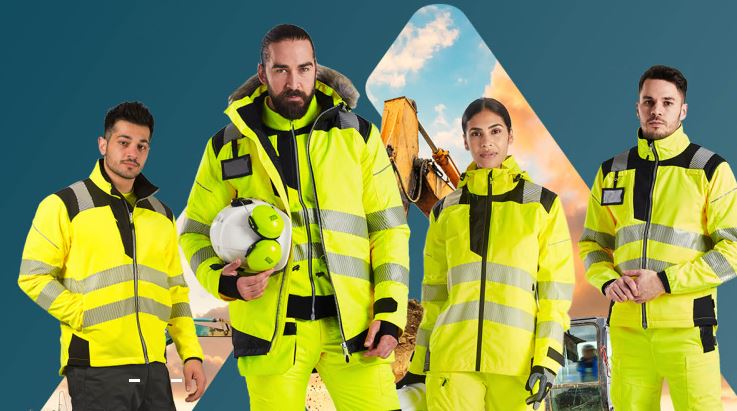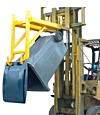
Emergency response operations represent some of the most challenging environments for implementing effective high-visibility protection, where first responders must operate under extreme conditions that combine time pressure, environmental hazards, and complex operational requirements with the fundamental need to remain visible to both civilian traffic and other emergency personnel. Understanding how ANSI class 2 hi vis protection supports emergency operations requires comprehensive knowledge of the unique challenges faced by police, fire, emergency medical services, and other first responder organisations.
Emergency Response Visibility Challenges
Emergency response operations create unique visibility challenges that distinguish them from other industrial applications requiring ANSI class 2 hi vis protection. The unpredictable nature of emergency scenes, combined with the need for rapid deployment and operation under adverse conditions, creates situations where traditional safety protocols may not provide adequate preparation time or optimal working conditions.
Incident scene management involves establishing safe working areas around accidents, emergencies, or other incidents where normal traffic patterns are disrupted and drivers may be distracted, confused, or impaired. Emergency responders must establish visibility quickly while operating under conditions that may include darkness, weather challenges, and time pressures that don't allow for comprehensive safety zone setup.
Multi-agency coordination at emergency scenes creates additional complexity where police, fire, emergency medical services, and potentially other organisations must work together in shared spaces. Consistent ANSI class 2 hi vis standards help ensure that all personnel remain visible and identifiable regardless of their specific agency or operational role.
Traffic exposure represents a particularly dangerous aspect of emergency response, where responders must operate on or near roadways while drivers approach scenes with limited warning or understanding of the situation. Enhanced visibility becomes critical for preventing secondary accidents that could injure emergency personnel and complicate rescue operations.
Environmental conditions during emergency operations frequently involve adverse weather, limited lighting, smoke, or other factors that compromise normal visibility. ANSI class 2 hi vis protection must remain effective under these challenging conditions while accommodating the specialised equipment and activities required for emergency response.
Time-critical operations mean that emergency responders cannot always wait for optimal conditions or complete safety preparations before beginning operations. Hi vis protection must provide immediate visibility enhancement that supports rapid deployment while maintaining effectiveness throughout extended operations.
Regulatory Framework for Emergency Service Hi Vis Requirements
Emergency service safety regulations increasingly recognise the importance of high-visibility protection for first responders operating in environments where traffic exposure, equipment hazards, and operational complexity create significant safety risks. Understanding these regulatory frameworks helps ensure compliance while supporting the development of comprehensive safety programs.
Occupational safety and health regulations for emergency services often include specific requirements for protective equipment including hi vis garments for personnel operating in traffic environments or other high-risk visibility situations. These regulations may specify particular standards or certification requirements that must be met.
Department-specific policies frequently establish hi vis requirements that exceed general regulatory minimums, reflecting the specific operational challenges and risk patterns encountered by different types of emergency services. Police departments, fire departments, and emergency medical services may each have unique requirements based on their operational profiles.
Mutual aid agreements between different emergency organisations often include equipment standardisation requirements that encompass hi vis protection standards. These agreements ensure that personnel from different agencies can work together effectively while maintaining consistent safety protection.
Grant funding requirements for emergency equipment may include specifications for hi vis protection that meet particular standards or certification requirements. Understanding these requirements helps emergency organisations maximise available funding while ensuring appropriate safety protection.
Hall-Fast's Emergency Services Expertise
Since Malcolm Hall MBE established Hall-Fast in August 2006, the company has developed extensive expertise in emergency services applications, working with police departments, fire services, emergency medical organisations, and other first responder agencies that depend on reliable ANSI class 2 hi vis solutions for personnel protection in demanding operational environments.
Hall-Fast's comprehensive understanding of emergency service requirements encompasses not only product specifications but also the practical challenges of implementing effective safety programs in organisations where operational readiness, budget constraints, and diverse operational requirements must all be balanced against safety objectives.
The company's award-winning success in supporting public safety operations, as documented on their awards page, includes experience with emergency services that have enhanced personnel protection while maintaining operational readiness and effectiveness across diverse emergency response scenarios.
As a proud family business committed to community support, Hall-Fast understands that effective emergency services represent essential community infrastructure. Their commitment to first responder safety reflects broader dedication to supporting the public safety systems that protect communities and save lives.
Portwest Emergency Service Hi Vis Solutions
The Portwest hi-visibility range available through Hall-Fast includes numerous products specifically designed to address emergency service requirements for ANSI class 2 protection. These specialised garments incorporate features that enhance visibility and functionality in emergency response environments while accommodating the diverse equipment and operational requirements of different first responder organisations.
Rapid deployment capability represents a critical feature for emergency hi vis garments, with designs that enable quick donning and proper fit adjustment under time pressure conditions common in emergency response. Simplified closure systems, intuitive sizing, and ergonomic design features support rapid equipment deployment when response time is critical.
Equipment integration becomes particularly important for emergency responders who must carry radios, weapons, medical equipment, rescue tools, and other specialised gear while maintaining hi vis protection. Properly designed emergency hi vis garments accommodate this equipment without interfering with accessibility or operational effectiveness.
Durability under extreme conditions addresses the reality that emergency operations may expose hi vis garments to challenging environments including fire scenes, accident sites, hazardous materials incidents, and other situations where normal wear patterns may be exceeded. Enhanced construction methods ensure continued protection under demanding use conditions.
Multi-functional designs enable emergency hi vis garments to serve multiple operational roles, reducing the equipment burden on emergency personnel while ensuring appropriate protection across diverse operational scenarios that may occur during extended incidents.
Law Enforcement Hi Vis Applications
Police operations create unique requirements for ANSI class 2 hi vis protection that must accommodate law enforcement equipment, provide tactical flexibility, and maintain professional appearance while ensuring officer safety during traffic control, accident investigation, and other high-visibility operational activities.
Traffic enforcement operations require hi vis protection that provides maximum visibility while accommodating duty equipment including weapons, radios, handcuffs, and other law enforcement tools. Specially designed hi vis garments integrate effectively with duty gear while maintaining ANSI class 2 compliance and professional appearance.
Accident investigation activities often involve extended periods working on or near roadways while documenting evidence, directing traffic, and coordinating with other agencies. Hi vis protection for these operations must provide sustained visibility while supporting the detailed work required for thorough investigation.
Highway patrol operations involve unique challenges where officers must remain visible to high-speed traffic while conducting enforcement activities, assisting motorists, and managing incident scenes. Enhanced retroreflective configurations provide superior visibility under highway conditions where reaction times are critical.
Crowd control and event management situations may require hi vis protection that provides visibility in complex environments where lighting conditions vary and officer identification becomes important for both safety and operational effectiveness. Consistent hi vis standards help ensure officer visibility across diverse operational scenarios.
Motorcycle patrol operations create specific requirements where hi vis protection must integrate with riding gear while providing enhanced visibility that compensates for the smaller profile of motorcycle officers compared to patrol vehicles. Specialised designs address these unique operational requirements.
Fire Service Hi Vis Requirements
Fire department operations present complex challenges where ANSI class 2 hi vis protection must integrate with turnout gear, provide visibility during emergency operations, and accommodate the diverse activities involved in fire suppression, rescue operations, and emergency medical response.
Structure fire operations may require hi vis protection that works in conjunction with full turnout gear while providing enhanced visibility during exterior operations, ventilation activities, and coordination with other agencies. Integration between different protective systems ensures comprehensive protection without compromising operational effectiveness.
Vehicle accident response creates situations where fire personnel must operate on roadways while conducting rescue operations, providing emergency medical care, and coordinating with law enforcement and emergency medical services. Hi vis protection provides essential visibility during these multi-agency operations.
Hazardous materials incidents require specialised protection that may include chemical-resistant properties combined with hi vis characteristics. These complex protection requirements demand sophisticated garment designs that address multiple hazards simultaneously while maintaining operational effectiveness.
Wildland fire operations involve unique environmental challenges where hi vis protection must provide visibility while accommodating specialized wildland gear and operational requirements that differ significantly from structural firefighting activities. Weather resistance and durability become particularly important for these extended outdoor operations.
Emergency medical response by fire personnel requires hi vis protection that accommodates medical equipment and provides freedom of movement necessary for patient care activities while ensuring visibility during roadway operations and multi-agency coordination.
Emergency Medical Services Hi Vis Protection
Emergency medical services create specific requirements for ANSI class 2 hi vis protection that must accommodate medical equipment, provide freedom of movement for patient care activities, and ensure visibility during roadway operations where ambulance crews face significant traffic exposure risks.
Ambulance operations involve unique challenges where crew members must remain visible while operating around emergency vehicles, loading and unloading patients, and coordinating with other emergency services. Hi vis protection must accommodate medical equipment while providing enhanced visibility under emergency lighting conditions.
Patient care activities require hi vis garments that provide protection without interfering with medical procedures, equipment use, or patient interaction. Garment designs must balance visibility requirements with the practical needs of emergency medical care delivery in diverse environments.
Helicopter operations involving air medical services create specific requirements where hi vis protection must provide visibility to flight crews while accommodating aviation safety requirements and the unique operational environment around aircraft operations.
Mass casualty incidents require hi vis protection that supports extended operations under challenging conditions where multiple patients, agencies, and operational requirements create complex coordination challenges. Consistent visibility standards help ensure effective incident management and personnel safety.
Infection control considerations may influence hi vis garment selection for emergency medical personnel, requiring materials and construction methods that support proper decontamination procedures while maintaining visibility properties throughout repeated cleaning cycles.
Specialised Emergency Response Applications
Specialised emergency response operations including technical rescue, hazardous materials response, and disaster relief create unique requirements for ANSI class 2 hi vis protection that must address specific operational challenges while maintaining visibility under demanding conditions.
Technical rescue operations involving confined space, high-angle, or water rescue activities require hi vis protection that integrates with specialised rescue equipment while providing visibility to team members and incident commanders coordinating complex operations. Equipment compatibility becomes particularly important for these specialised applications.
Hazardous materials response operations require hi vis protection that may incorporate chemical resistance, decontamination compatibility, and other specialised features while maintaining visibility properties essential for team coordination and incident management under potentially dangerous conditions.
Search and rescue operations often involve extended operations in diverse environments where hi vis protection must provide visibility while accommodating navigation equipment, communication devices, and other specialised gear required for effective search operations.
Disaster response activities may require hi vis protection that performs effectively across diverse operational environments from urban search and rescue to emergency shelter operations, requiring versatility and durability that supports extended operations under challenging conditions.
Weather and Environmental Considerations
Emergency operations frequently occur during adverse weather conditions that create additional challenges for maintaining effective hi vis protection while ensuring responder safety and operational effectiveness under environmental conditions that may be particularly demanding.
Severe weather response operations require hi vis protection that maintains effectiveness during rain, snow, wind, and other conditions that may compromise visibility while emergency responders conduct operations that cannot be delayed due to weather conditions. Weather-resistant designs ensure continued protection and visibility.
Night operations present particular challenges where artificial lighting from emergency vehicles, street lights, and portable lighting equipment creates complex lighting conditions that may affect hi vis performance. Enhanced retroreflective materials and strategic placement ensure optimal visibility under these conditions.
Seasonal considerations address the reality that emergency operations continue year-round while environmental conditions change significantly. Layering-compatible hi vis options provide flexibility that accommodates both summer heat and winter cold while maintaining essential visibility protection.
Indoor emergency operations including building evacuations, structure collapses, or hazardous materials incidents may involve lighting conditions that differ from outdoor applications. Hi vis protection must remain effective across these varying environmental conditions.
Quality and Performance Standards
Emergency service applications place exceptional demands on ANSI class 2 hi vis garments, requiring superior materials and construction methods that maintain protection under the challenging conditions common in emergency response operations while supporting the rapid deployment and demanding use patterns typical of first responder activities.
Durability testing for emergency hi vis garments must encompass evaluation under conditions that simulate emergency response stresses including rapid deployment, contact with emergency equipment, exposure to emergency scene contaminants, and frequent cleaning cycles required for infection control and professional appearance.
Visibility performance verification includes testing under various lighting conditions representative of emergency scenes including emergency vehicle lighting, street lighting, and portable illumination systems used during emergency operations. Comprehensive testing ensures continued effectiveness under real-world emergency conditions.
Compatibility verification ensures that emergency hi vis garments work effectively with the diverse equipment used by different emergency services including duty gear, turnout equipment, medical devices, and specialised rescue equipment without compromising either visibility or operational effectiveness.
Certification requirements for emergency service hi vis equipment may include specific standards or testing protocols that address the unique requirements of first responder applications. Understanding and meeting these requirements ensures appropriate protection and regulatory compliance.
Training and Implementation for Emergency Services
Implementing effective ANSI class 2 hi vis programs in emergency services requires comprehensive training approaches that address both the technical aspects of proper protection use and the operational integration necessary for maintaining safety effectiveness without compromising emergency response capabilities.
Deployment training ensures that emergency personnel can quickly and correctly don hi vis protection under time pressure conditions common in emergency response. Practice with rapid deployment procedures helps ensure that safety equipment enhances rather than hinders emergency response effectiveness.
Equipment integration training addresses the proper coordination between hi vis protection and other emergency equipment including duty gear, turnout equipment, and specialised response tools. Proper integration ensures that all equipment works together effectively.
Scenario-based training provides opportunities for emergency personnel to practice using hi vis protection under simulated emergency conditions that represent the various operational scenarios they may encounter. Realistic training helps ensure effective performance under actual emergency conditions.
Multi-agency coordination training ensures that personnel from different organisations understand hi vis standards and can work together effectively during mutual aid operations. Consistent understanding and implementation supports effective inter-agency coordination.
Cost Considerations and Funding Strategies
Emergency services often operate under significant budget constraints that require careful consideration of cost factors when implementing ANSI class 2 hi vis programs. Understanding funding options and cost-benefit relationships helps ensure sustainable programs that provide essential protection.
Grant funding opportunities frequently include provisions for emergency service safety equipment including hi vis protection. Understanding available funding sources and application requirements can help emergency organisations acquire necessary equipment while managing budget constraints.
Lifecycle cost analysis for emergency service hi vis programs should consider not only initial equipment costs but also replacement frequency, maintenance requirements, and the potential costs of line-of-duty injuries prevented through effective visibility protection.
Multi-use versatility can provide cost advantages by selecting hi vis equipment that serves multiple operational roles, reducing overall equipment requirements while ensuring appropriate protection across diverse emergency response scenarios.
Cooperative purchasing opportunities enable emergency organisations to achieve economies of scale through joint procurement with other agencies, potentially reducing costs while ensuring standardisation that supports mutual aid operations.
Technology Integration and Future Developments
Emergency service technology continues to evolve rapidly, creating opportunities for enhanced integration between ANSI class 2 hi vis protection and emerging technologies that can further improve first responder safety and operational effectiveness.
Communication system integration ensures that radio equipment, emergency beacons, and other communication devices work effectively with hi vis protection without compromising visibility properties or communication effectiveness. Proper integration supports coordination and emergency response capabilities.
Location tracking systems can enhance emergency personnel safety when integrated with hi vis protection programs, providing incident commanders with real-time information about responder locations while maintaining essential visibility protection.
Advanced lighting systems including LED enhancement and battery-powered visibility aids can supplement traditional hi vis protection during particularly high-risk operations while maintaining compatibility with standard ANSI class 2 requirements.
Smart emergency systems incorporating Internet of Things (IoT) capabilities may eventually provide enhanced safety monitoring that supplements traditional hi vis protection with automated hazard detection and personnel tracking capabilities.
Conclusion
ANSI class 2 hi vis protection represents a critical component of comprehensive emergency service safety programs, addressing visibility challenges that are inherent in first responder operations while supporting operational effectiveness and personnel protection in some of the most demanding work environments encountered by any profession. The combination of Portwest's proven hi vis technology and Hall-Fast's emergency services expertise provides first responder organisations with access to reliable safety solutions that enhance personnel protection while supporting operational mission success.
From routine traffic enforcement to complex multi-agency emergency operations, the extensive Portwest range available through Hall-Fast provides solutions that address every emergency service ANSI class 2 hi vis requirement. Expert support services and comprehensive understanding of first responder safety challenges ensure that emergency organisations receive complete solutions that enhance personnel safety and operational effectiveness.
For detailed information about emergency service-specific hi vis solutions or to discuss particular operational requirements, contact the Hall-Fast team through their contact page. With nearly two decades of experience supporting emergency services and comprehensive understanding of first responder requirements, Hall-Fast delivers the expertise and products that keep emergency personnel safe while serving their communities.












